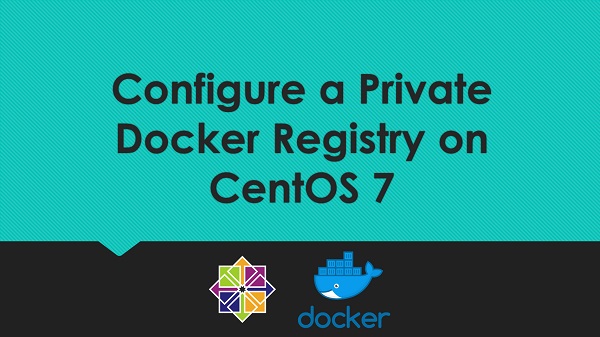

- #Centos docker insecure registry how to#
- #Centos docker insecure registry software#
- #Centos docker insecure registry plus#
#Centos docker insecure registry how to#
How to securely install the latest Docker release So, in order to set up a Docker registry, you first need to… Good news, a Docker registry is just a Docker image! Let’s start from scratch instead, and publish our private registry on Exoscale’s cloud servers. integrate it with one’s identity store for authenticated access. More importantly, using the SaaS version of Gitlab’s registry is an all-or-nothing option: It’s quite hard to remove images (while it’s possible to untag them though), and However, GitLab’s registry is a solution that is still a bit rough around the edges. Provides a Docker registry per project among more traditional “build” capabilities,Īnd it can be configured to be freely accessible or private. Note that while you can pull freely, pushing still requires some kind of authentication.Ī registry can be considered private if pulling requires authentication too.įor example, GitLab, a popular Continuous Integration platform, Check if the hello-world image is found locally.In a very simplified way, the process goes like this: docker pull.įor example, let’s run: $ docker run hello-world

docker push, and let third-parties get them i.e. Or, what if you want to privately share the image with your team?Ī registry can be considered private if pulling requires authenticationĪ Docker registry is a place where you can store your images i.e.
#Centos docker insecure registry software#
What is a private Docker registry anyway?Īfter building a Docker image on your machine, it’s possible to run it on the spot.īut if you’re a software provider, what if you want to share the image with the whole world? We will split the process in two, setting up first and securing the registry later.

Let’s see how to setup a private registry, and then later how to secure the whole thing. To improve availability, a registry would be better hosted on an external server. We described how to configure a Docker registry storing images on Exoscale’s Object Storage, yet this keeps the local Docker instance responsible for the processing itself. In an earlier post, we had a look at how one could store Docker images in Exoscale’s S3-compatible object storage.
#Centos docker insecure registry plus#
Plus added features like access authentication. Keeping a consistent, private, and centralized source of truth for the building blocks of your architecture.Ī private Docker registry gives you better performances for big clusters and high-frequency roll-outs, The key is: docker-engine will not assign IP to docker0 interface which is already exists.A private Docker registry allows you to share your custom base images within your organization, Consequently, I find out this solution in my environment (totally remove the network bridge): It seems many people meet this problem after I searching the google, but none of the solutions works for me. The ethernet interface of docker0 can not be assigned IPv4 addresse. Daemon option -bip can be used to set a preferred IP address"Īpr 01 19:07:00 XXX docker: time="T19:07:00.511949325+08:00" level=fatal msg="Error starting daemon: Error initializing network controller: Error creating default \"bridge\" network: Failed to setup IP tables, cannot acquire Interface address: Interface docker0 has no IPv4 addresses" Process: 8136 ExecStart=/usr/bin/docker daemon -storage-driver=devicemapper -storage-opt dm.datadev=/dev/direct-lvm/data -storage-opt dm.metadatadev=/dev/direct-lvm/metadata -H fd:// -insecure-registry (code=exited, status=1/FAILURE) Loaded: loaded (/usr/lib/systemd/system/rvice disabled vendor preset: disabled)Īctive: failed (Result: exit-code) since Fri 19:07:00 CST 3s ago

After installing docker-engine on Centos-7, it failed to start by


 0 kommentar(er)
0 kommentar(er)
